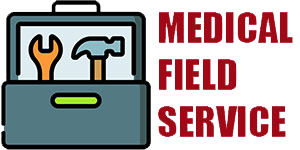

Hospital Equipment Maintenance
Hospital equipment maintenance refers to the ongoing upkeep and care of medical equipment in a hospital setting. The goal of equipment maintenance is to ensure that all equipment is in good working condition and is safe for use by patients and healthcare staff. Proper maintenance can extend the lifespan of equipment, reduce the need for costly repairs, and improve patient outcomes.
Types of equipment: Hospital equipment maintenance encompasses a wide range of medical equipment, including diagnostic equipment, imaging equipment, patient monitoring equipment, and surgical equipment. The type of equipment that requires maintenance will depend on the specific hospital and its needs.
Preventive maintenance: One of the key components of hospital equipment maintenance is preventive maintenance. This type of maintenance is designed to identify and address potential issues before they become major problems. Preventive maintenance can include tasks such as cleaning and lubricating equipment, replacing worn or damaged parts, and performing system checks to ensure that equipment is operating correctly.
Emergency repairs: In addition to preventive maintenance, hospital equipment maintenance also includes emergency repairs. This can include troubleshooting and diagnosing equipment issues, replacing broken or damaged parts, and making other necessary repairs to ensure that equipment is back in working order as quickly as possible.
Scheduled maintenance: Equipment maintenance is generally scheduled on a regular basis, and this schedule can vary depending on the type of equipment and its usage. For example, equipment that is used frequently will require more frequent maintenance than equipment that is used less frequently.
Documentation: Hospital equipment maintenance includes keeping detailed records of all maintenance activities. This documentation is essential for maintaining a history of the equipment and its performance, and it can also be used to identify trends or patterns that may indicate potential issues.
Regulatory compliance: Hospital equipment maintenance must also ensure compliance with relevant regulations, including safety and environmental regulations. This includes ensuring that all equipment is properly labeled and that maintenance is performed in accordance with the manufacturer's instructions.
Cost savings: Proper maintenance can help to save cost by preventing equipment breakdowns, extending the lifespan of equipment, and reducing the need for costly replacements. Additionally, regular maintenance can help to ensure that equipment is working correctly and safely, which can prevent costly errors and improve patient outcomes.
In conclusion, hospital equipment maintenance refers to the ongoing upkeep and care of medical equipment in a hospital setting. The goal of equipment maintenance is to ensure that all equipment is in good working condition and is safe for use by patients and healthcare staff. Proper maintenance can extend the lifespan of equipment, reduce the need for costly repairs, and improve patient outcomes. Equipment maintenance includes preventive maintenance, emergency repairs, scheduled maintenance, documentation and ensuring regulatory compliance. Proper maintenance can help to save cost by preventing equipment breakdowns, extending the lifespan of equipment, and reducing the need for costly replacements. Additionally, regular maintenance can help to ensure that equipment is working correctly and safely, which can prevent costly errors and improve patient outcomes.
Medical Field Service
Regulatory Compliance
We provide you with the documentation necessary to maintain compliance with the requirements of the Food and Drug Administration 510(K) process and all other regulatory agencies.Service and Maintenance
We perform all of your field service operations. This includes medical device installation, repair, calibration, preventive maintenance inspections and applications assistance for your end users.In-Service Education
We offer in-service education to your staff on the prinicpal and safety function of Medical Field Services and line isolation monitors.Online Service Reporting
We provide online service reports, including images and video whenever applicable.24-Hour Tech Support
Our support representatives are available 24 hours a day to answer any questions you may have.Design
We communicate with your design engineers about frequent and out-of-the-box malfunctions.Testimonials

"I don’t think we could have successfully launched our medical device without the help of Medical Field Service. As a new medical equipment manufacturer, we didn’t have a service function established. Through their network of medical equipment repair companies, Medical Field Service was able to provide field service operations nationwide."
- Bruce Ramirez PhD

"Medical Field Service helped our sales team to expand territories rapidly, by providing reliable medical equipment installation, repair , calibration, and preventative maintenance services. This enabled us to grow at a faster rate than we anticipated."
- Gary Murphy M.D. PhD

"It’s great having the services of Medical Field Service during the Food and Drug Administration’s 510(K) process for medical device certification. Medical Field Service representatives not only perform medical equipment installation, repairs, calibrations, and preventive maintenance inspections; they also give our design engineers valuable feedback on repeat and out-of-the-box failures that may occur. They are the best source of Hospital Equipment Maintenance for Medical Equipment Manufacturers."
- Joyce Gomez R.N.

